Vakil Bath in Shiraz
Vakil Bath, Historic Public Bath with Wax Figures
Shiraz is a famous tourist destination for travelers to Iran. Many monuments in this city have been left from the short but important reign of Karim Khan Zand. In Vakil Complex series that Shiraz is most famous for, we talked about the incredible Vakil Mosque, Vakil Bazaar, Karim Khan Citadel and Pars Museum until now. To continue our discussion, let us talk about Vakil Bath as a part of the Vakil complex remaining from the old ages to the current time.
| Monument Name | Vakil Bath, Wakil Bath, Wakil Hammam, Vakil Bathhouse, حمام وکیل |
| Contact No. | +98(0)7132247646 |
| Monument Category | Historical Bath |
| Website | N/A |
| City | Shiraz |
| Coordinates | 29.614775°N 52.545122°E |
 Being the most famous historic bath in Shiraz, Vakil Bath is a part of the Vakil complex made by the order of Karim Khan Zand in the 18th century. After Karim Khan selected Shiraz as his capital the constructions such as Vakil Mosque, Bazaar and bath were built in the center of Shiraz. Vakil Hammam like other typical historic baths is a wonder that we will go through in this article. Stay with us!
Being the most famous historic bath in Shiraz, Vakil Bath is a part of the Vakil complex made by the order of Karim Khan Zand in the 18th century. After Karim Khan selected Shiraz as his capital the constructions such as Vakil Mosque, Bazaar and bath were built in the center of Shiraz. Vakil Hammam like other typical historic baths is a wonder that we will go through in this article. Stay with us!
Vakil Bath was one of the largest baths built and designed in accordance with the most advanced architectural principles of its time. After its long history, today this monument is turned into an attractive museum. You can witness the activities done in the bath through the wax sculptures there.
Visiting this museum is recommended because, in this bath and museum, you will both visit the beautiful architecture of this bath and get acquainted with the ancient culture and customs of Iran and the Shirazi people in specific. Take part in Shiraz City Tour or Shiraz Walking Tour to visit this bath with the local Shirazi tour guide who will tell you the customs of this city.
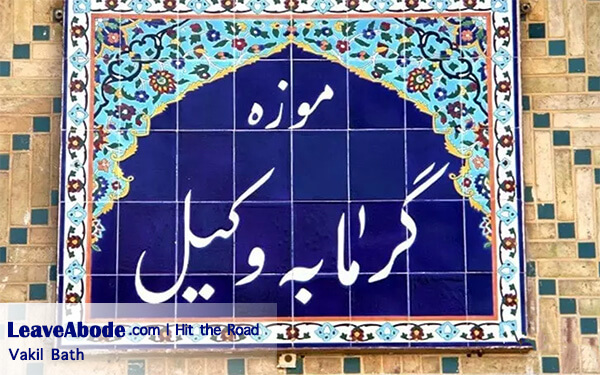 In old ages, as well as being a place of cleansing, the baths were a hangout for the local people to interact with each other to talk for hours. So, the baths are built in such a way that people feel comfortable in there. The architecture of the baths was smart in a way that the temperature inside the bathroom was much higher than the weather outside. This was because of the short corridors that were built between each space.
In old ages, as well as being a place of cleansing, the baths were a hangout for the local people to interact with each other to talk for hours. So, the baths are built in such a way that people feel comfortable in there. The architecture of the baths was smart in a way that the temperature inside the bathroom was much higher than the weather outside. This was because of the short corridors that were built between each space.
Let us introduce you the easiest way to get an Iran Visa to visit the Vakil Bath if you have the temptation of visiting the Vakil complex. As soon as you are in Iran you may need a comfortable Airport Transfer. Let us arrange it for you at the lowest rates.
Features of Persian Bath
 One of the noticeable features of the Persian baths is that it was not only a place for washing and cleansing, but it had an important role in the social and even political life of people. There is an Iranian proverb that says about friendship: “they are friends in the bath and the garden” which shows how important was the bath in the social life of Iranians. Various ceremonies have also been performed in the baths. Here is a list of activities in which the baths had an important role:
One of the noticeable features of the Persian baths is that it was not only a place for washing and cleansing, but it had an important role in the social and even political life of people. There is an Iranian proverb that says about friendship: “they are friends in the bath and the garden” which shows how important was the bath in the social life of Iranians. Various ceremonies have also been performed in the baths. Here is a list of activities in which the baths had an important role:
- Baths were a public place for family and friends’ gatherings. They even eat food and snacks there.
- Some celebrations such as the marriage proposal (done by the women), bride and groom bath and maternity bath (after labouring) were held in these baths.
- Bathhouses were a place for the treatment of different diseases and even fatigue by using the benefit of hot/cold water reservoirs, massage and medicinal herbs.
- Baths have been the meeting place of elders and intellectuals who talked about different matters and even read and composed poems.
- The baths also had roles in the political issues where the government leaders had meetings.
- The people who fled social or political events took refuge in baths like in holy places.
- Sometimes the baths became a place for the assassination of political leaders like the assassination of Amir Kabir in Fin Bath in Kashan.
History of Shiraz Vakil Bath
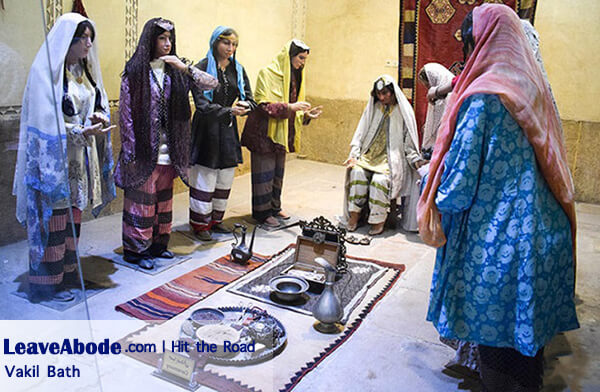 Karim Khan Zand who was the king of Iran selected Shiraz as his capital. During his reign (1172-1193 about 260 years ago), he built many buildings in this beautiful city that today we know as the Vakil complex.
Karim Khan Zand who was the king of Iran selected Shiraz as his capital. During his reign (1172-1193 about 260 years ago), he built many buildings in this beautiful city that today we know as the Vakil complex.
After being used as a Hammam, restaurant, and carpet museum finally this bath found its own place and turned into a bath museum. In this museum, there are 30 wax sculptures located in different positions that represent an interesting story from the past. In other words, visiting this amazing museum is like a journey into time, a journey that takes visitors to ancient Shiraz.
Vakil Bath Architecture and Features
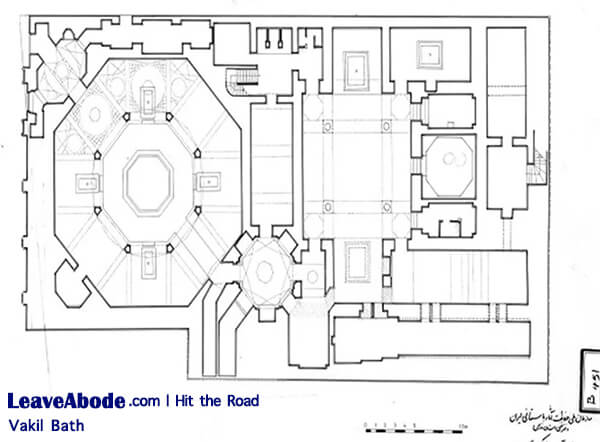 Vakil bath has an area of 11,000 square meters. This large bath, like other baths in Iran, benefits from the most advanced technology of its time.
Vakil bath has an area of 11,000 square meters. This large bath, like other baths in Iran, benefits from the most advanced technology of its time.
The lighting of the whole bathroom is provided by the dome-shaped holes installed in the ceiling that provided light naturally, which in Iranian architectural terms is called "Goljam".
The bath has three main parts: dressing room, hallway and hothouse. Read about the main plan of this bath and next time you will visit it pay attention to its architecture.
Entrance and Dressing Room
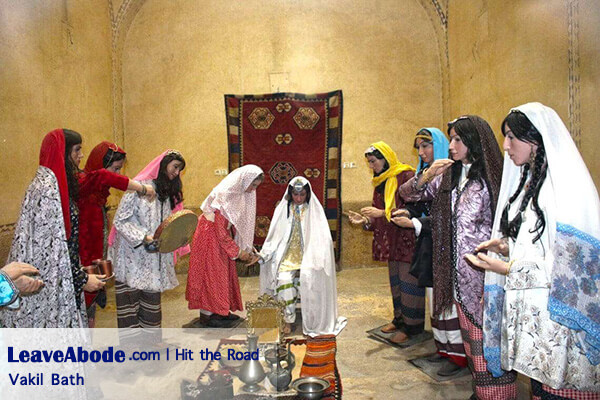 An important issue in the bathroom is keeping it warm. Today this problem is solved by the means of heating devices; but in the past, smart architectural principles were used to solve this problem. In the Vakil bath, the entrance to the dressing room that is actually the connection of the bathroom with the outside is a small vestibule that is gently inclined. The dressing room is lower than the ground level and the entrance to this room is installed at an angle. All the features of this type of construction have been applied to keep the accumulated heat inside as well as help the body temperature adjust when leaving the bathroom.
An important issue in the bathroom is keeping it warm. Today this problem is solved by the means of heating devices; but in the past, smart architectural principles were used to solve this problem. In the Vakil bath, the entrance to the dressing room that is actually the connection of the bathroom with the outside is a small vestibule that is gently inclined. The dressing room is lower than the ground level and the entrance to this room is installed at an angle. All the features of this type of construction have been applied to keep the accumulated heat inside as well as help the body temperature adjust when leaving the bathroom.
The dressing room is an octagon area with a large octagon tub in the middle. The large arched roof in this section is supported by eight carved stone pillars.
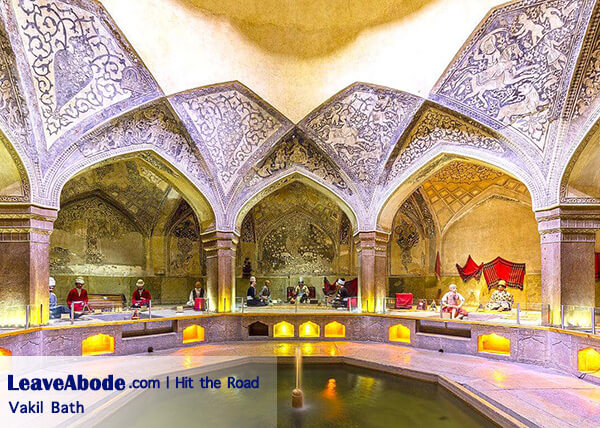 There are four small tubs of cold water where people sank their feet before and after washing as it was recommended to put your feet in cold water after bathing.
There are four small tubs of cold water where people sank their feet before and after washing as it was recommended to put your feet in cold water after bathing.
Around the dressing room, there are high platforms where people removed their clothes and under the stone platforms, there are spaces for placing shoes. People selected the special platforms based on their social status.
Famous limestone images of old Persian stories are engraved on the roof of this building, which attracts the attention of every visitor. In these decorations, mythical and fictional patterns are placed next to geometric plant motifs and figures. Another ingenuity in the bath is the use of lime as the material to decorate the ceiling and walls instead of plaster, because plaster absorbs moisture, reduces the temperature and is also less robust.
Hothouse and Hallway
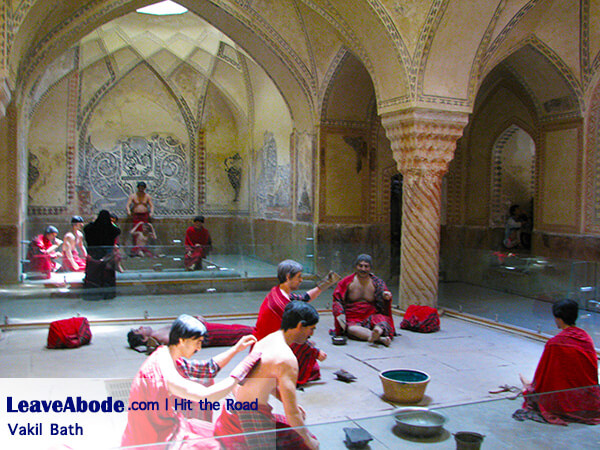 The hothouse is actually the main washing space. This space in the Vakil bathhouse has a square base and looks smaller than the dressing room space. There are four stone pillars in the middle of this space and a beautiful arch rest on them. The floor of the hothouse is covered by marbles and beneath it, there are narrow canals for circulating vapour that heats the bathroom floor. There are three hot/cold water tubs that are heated by two large boilers.
The hothouse is actually the main washing space. This space in the Vakil bathhouse has a square base and looks smaller than the dressing room space. There are four stone pillars in the middle of this space and a beautiful arch rest on them. The floor of the hothouse is covered by marbles and beneath it, there are narrow canals for circulating vapour that heats the bathroom floor. There are three hot/cold water tubs that are heated by two large boilers.
The dressing room is connected to the hothouse by a hallway. The hallway is not direct which avoids the heat exchange and the direct view between the two spaces. This space has limestone decorations on the ceiling and walls.
How was the Vakil bathhouse in Shiraz heated?
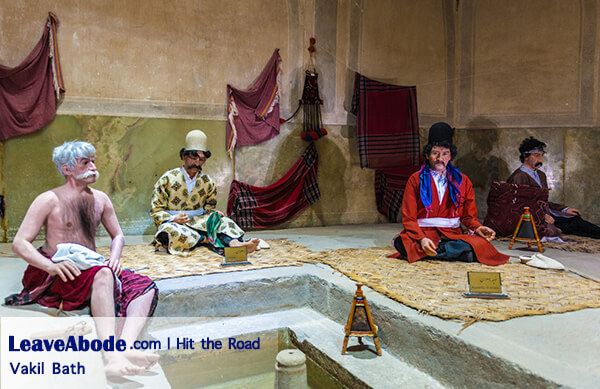 As said before, the architecture of the Vakil bath was done smartly. As an example, the underfloor heating technology of this bath is the thing that nowadays is done in modern architecture. The floor of this bath is getting warm from beneath. Under the marbles of the floor, narrow channels are installed through which the hot vapour flows that keeping the bathroom warm. The entire bath environment was always warm due to the hot water in the tubs.
As said before, the architecture of the Vakil bath was done smartly. As an example, the underfloor heating technology of this bath is the thing that nowadays is done in modern architecture. The floor of this bath is getting warm from beneath. Under the marbles of the floor, narrow channels are installed through which the hot vapour flows that keeping the bathroom warm. The entire bath environment was always warm due to the hot water in the tubs.
Why visiting the Vakil bathhouse in Shiraz is recommended?
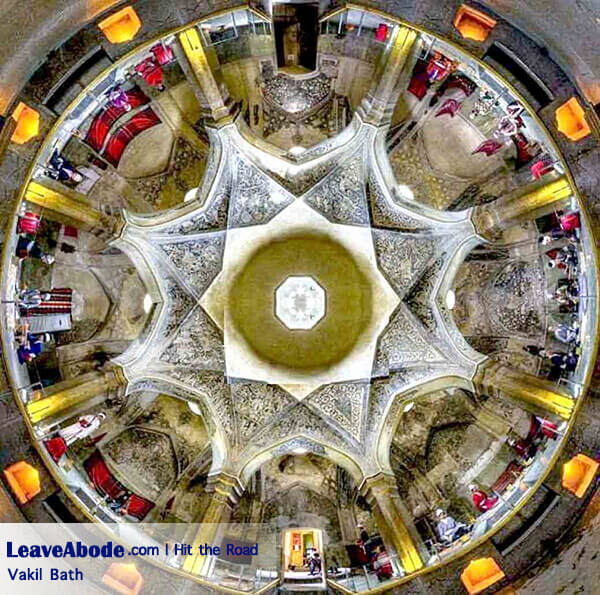 We suggest you visit Vakil bath for these reasons:
We suggest you visit Vakil bath for these reasons:
- Vakil bath is a part of the Vakil complex returning to an important historical era of Shiraz.
- It represents the glory of the Zand Kingdom.
- This monument is a bath with eye-catching decorations and colors.
- The architecture and construction of the Vakil bath are wise.
- It is located near the Vakil Bazaar and Mosque so you can see it all in one day.
Shiraz Vakil Bath Turned into a Museum
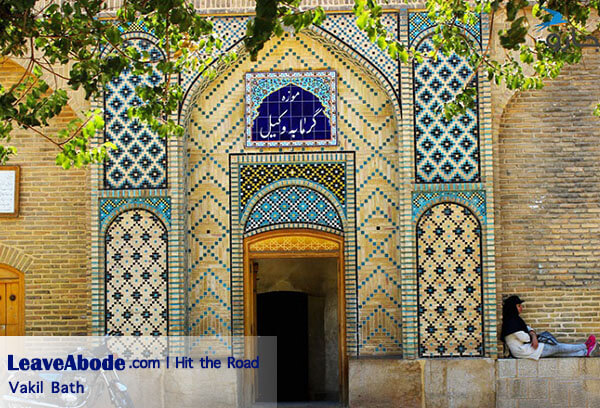 After its long history finally, the Vakil bath was turned into a museum. In this museum, 30 wax sculptures represent interesting stories that happened there in the old ages. Visiting this amazing museum is like a journey into the golden ages of this bath, the city of Shiraz and the customs of the Shirazi people to witness how people passed time there.
After its long history finally, the Vakil bath was turned into a museum. In this museum, 30 wax sculptures represent interesting stories that happened there in the old ages. Visiting this amazing museum is like a journey into the golden ages of this bath, the city of Shiraz and the customs of the Shirazi people to witness how people passed time there.
What other places of interest can you visit near Vakil Bath?
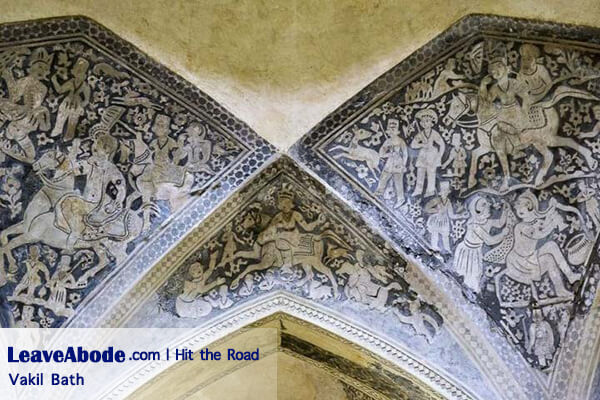 Karim Khan Citadel: 1.3 (5 minutes walk)
Karim Khan Citadel: 1.3 (5 minutes walk)- Pars Museum: 1.9 (10 minutes walk)
- Khan Madrassa: 2.5 (15 minutes walk)
- Forough Al-Molk Museum: 2.1 (11 minutes walk)
- Meshkinfam Art Museum: 2.1 (11 minutes walk)
- Manteghi Nezhad House: 2.2 (10 minutes walk)
- Shah Cheragh: 2.4 km
- Nasir Al-Molk Mosque: 2.9 (15 minutes walk)
- Zinat al-Mulk House: 3 (14 minutes walk)
- Haft Tanan Stone Museum: 3.5
What hotels are there to stay near the Vakil bath?
- Shiraz traditional court hotel
- Shiraz Star Hotel
- Homa Hotel in Shiraz
- Eram Hotel
- Parsian Hotel
- Karim Khan Hotel
- Aryobarzan Hotel
What restaurants and eateries are close to the Vakil bathhouse?
- Sharzeh Traditional Restaurant: 1-minute walk
- Vakil Traditional Historic Restaurant: 4 minutes walk
- Sarai Traditional Restaurant: 6 minutes walk
- Stove and Fire Restaurant: 7 minutes walk
- Kate Moss Restaurant: 9 minutes walk
- Sufi Restaurant: 15 minutes walk
- Ghavam Restaurant Cafe: 15 minutes walk
Don't forget to book a tour to Vakil Bath
Know Before You Go
The best way is to take part in one of the Shiraz City Tour and Shiraz Walking Tour of Leaveabode.
This monument is located in the center of Shiraz, near the busy and main streets, so it is really easy to access.
- By Metro: The nearest metro station is Zandieh Station. A short walk is required from this station to the destination.
- By Bus: The nearest station is Shahrdari station and from almost anywhere in Shiraz, there are bus connections to this square.
Vakil Bath is located on Taleghani Street in the city center of Shiraz, west of the Vakil Mosque and Bazaar.
Seasons | Hours |
| Spring and summer | from 8:30 to 20:30 |
| Autumn and winter | from 7:30 to 19:30 |
The required time from this monument is 1 hour.
- 1 April
- 4 May
- 14 & 15 May
- 4 & 5 & 7 June
- 18 & 19 August
- 6 & 7 October
The dates may be changeable so get in touch with us for recent information. [email protected]
Vakil Bath was built during the reign of Karim Khan Zand in the 18th century.
The smart architecture of Vakil Bath, such as the special design of the entrance and the installation of narrow channels in the floor, has made it a remarkable example in historical baths. Also, the decorations have added to its beauty.
Day Tours Near Vakil Bath
Attractions Near Vakil Bath
Monuments Like Vakil Bath
Vakil Bath on Map
Cities
Activities
City Tours
Hike & Trek Tours
Meet Locals Tours
Biking Tours
Wild Life Tours
Events
Shiraz
The city of love
Shiraz, the cultural capital of Iran, is synonymous with the city of poets, education, nightingales, and wine. It is a must-see that you would not miss during your trip to Iran. It is very close to Persepolis in the Fars …



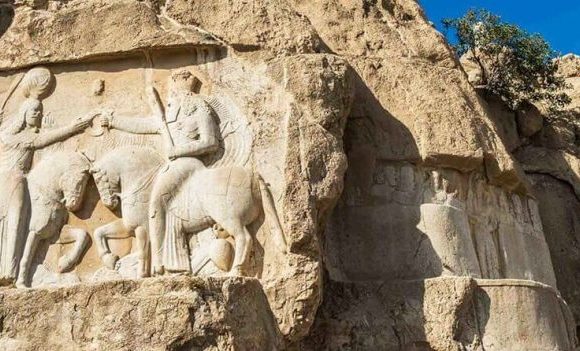


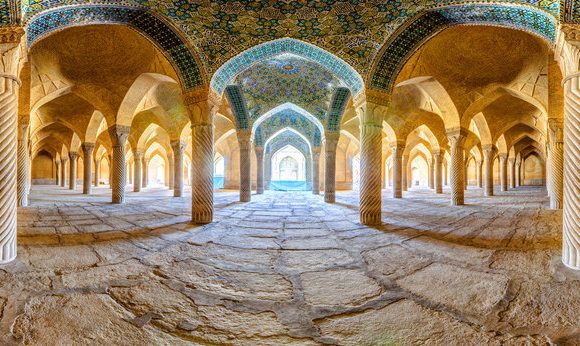
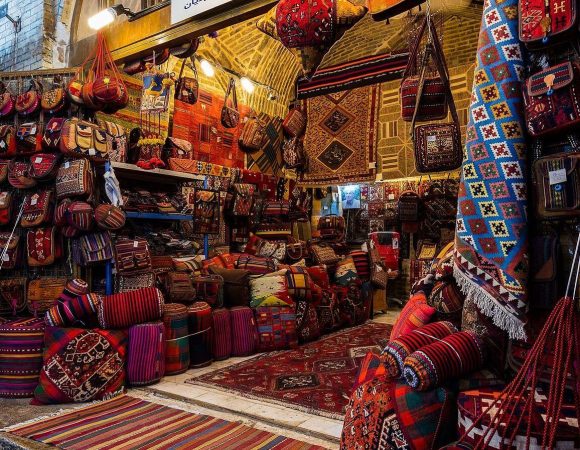

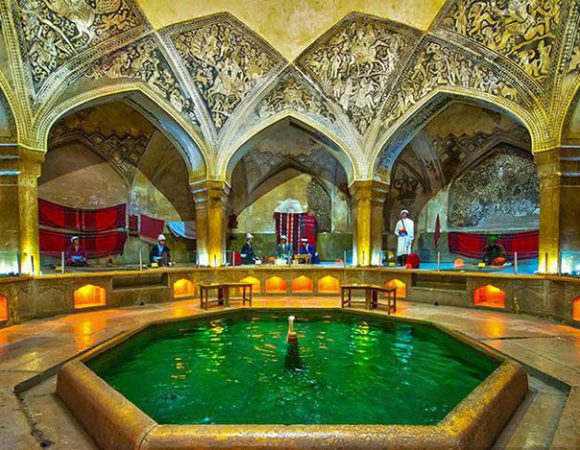
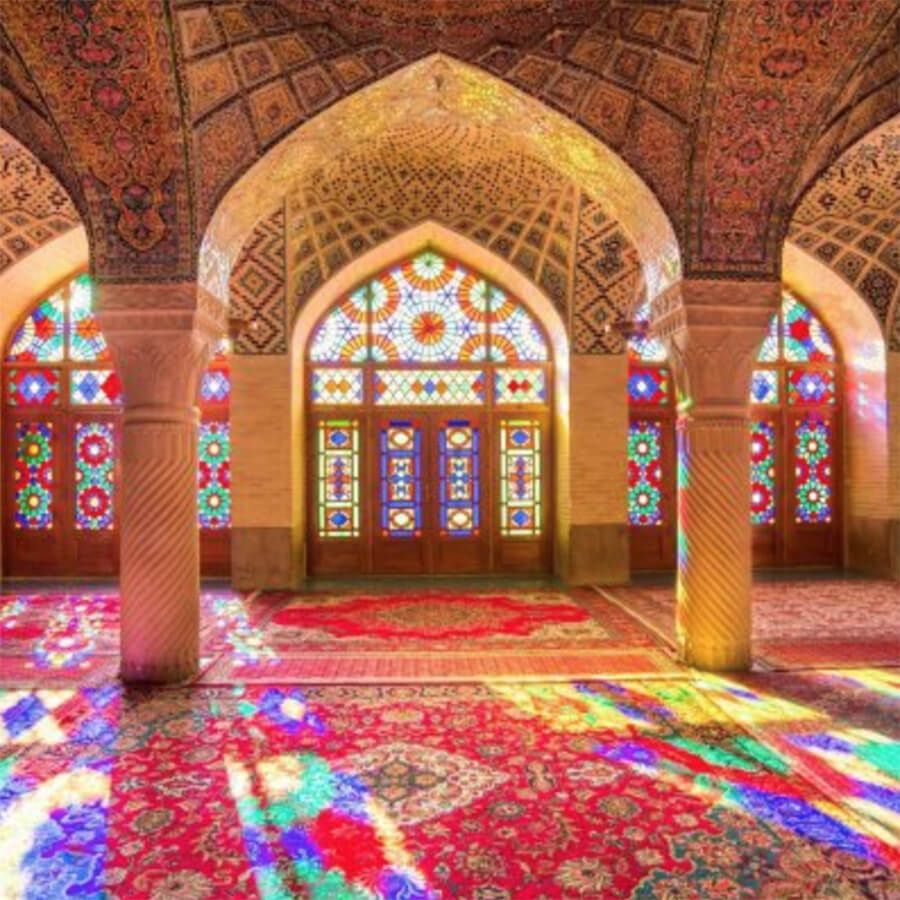
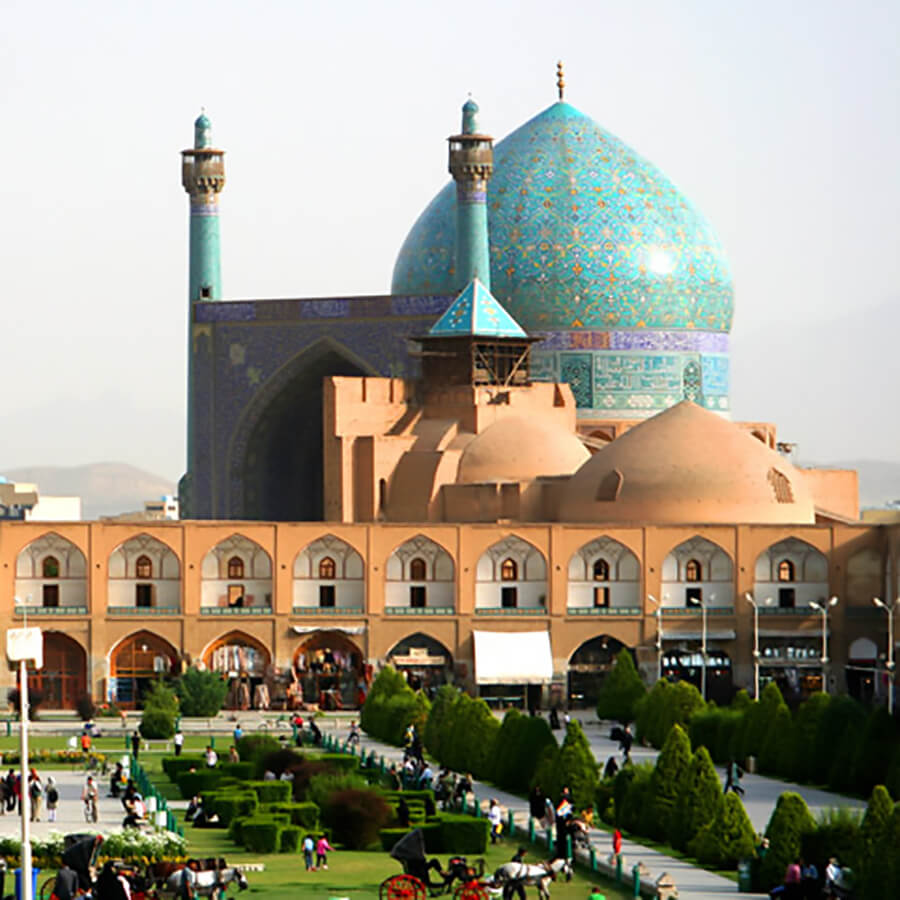
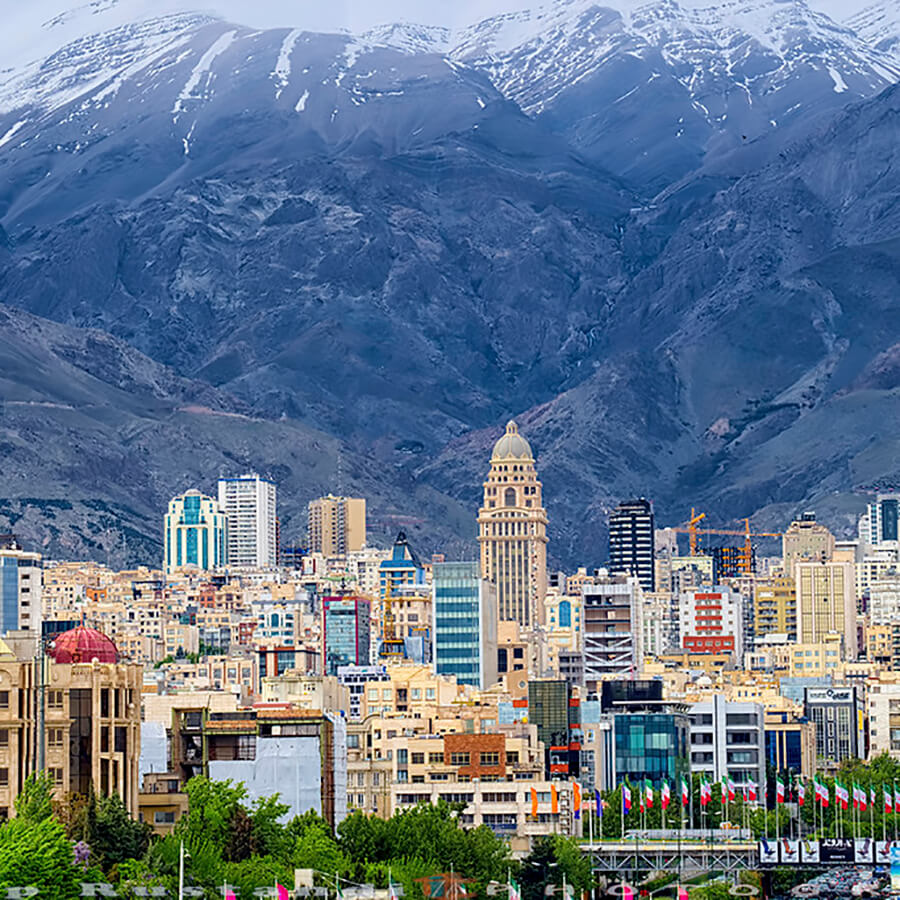
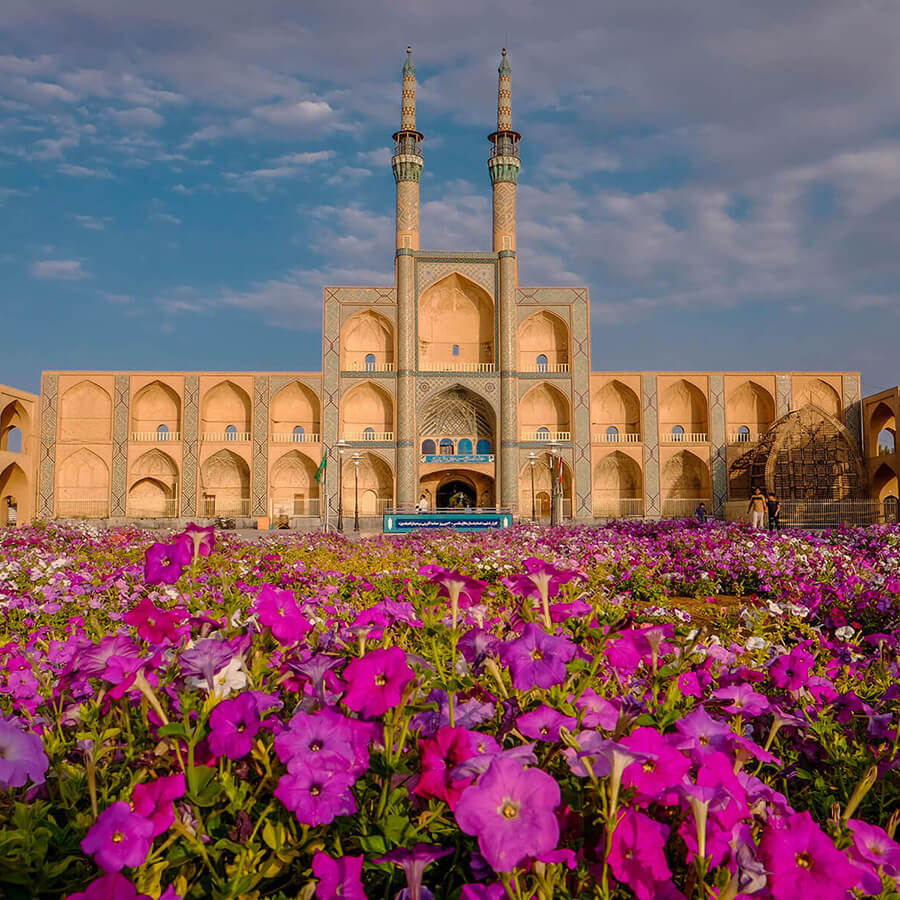
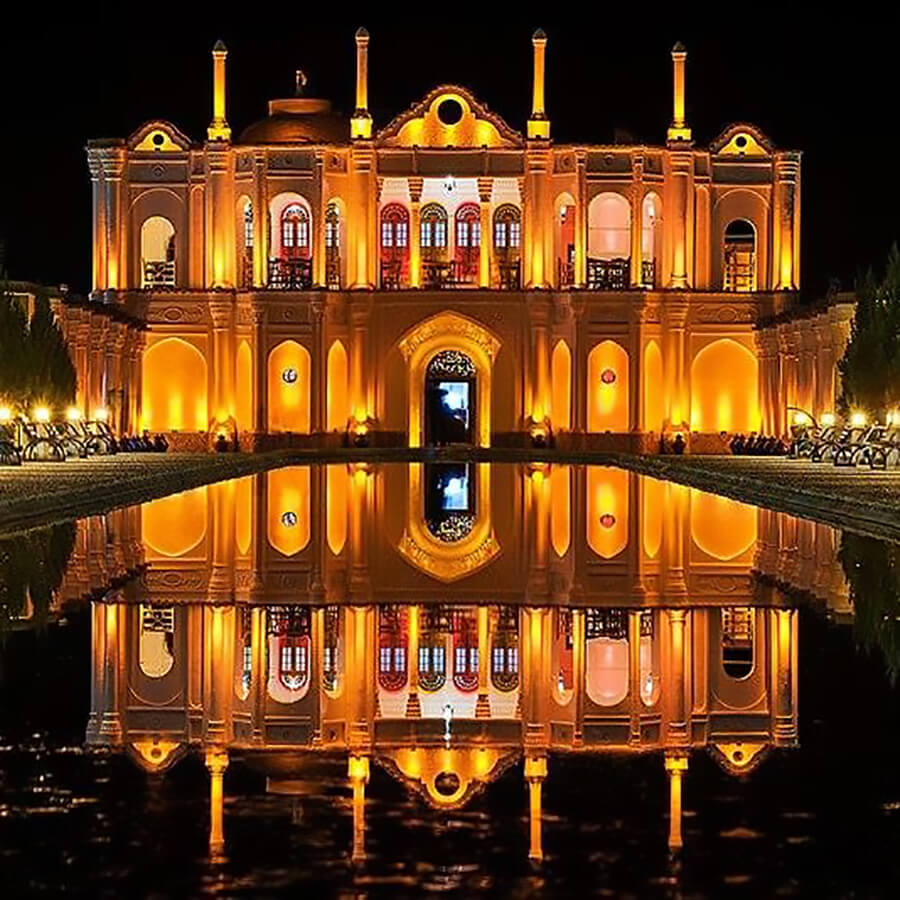
A good museum with wax sculptures. Although the description was very short; but the presence of the sculptures made me understand the function of this place very well. One of the good museums I saw in Iran.
This is the most beautiful bath I have ever seen. An eye-catching combination of architectural principles and artwork. There was even a stone clock there. How clever! You understand time by the angle of the sunlight. I love this place.